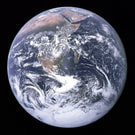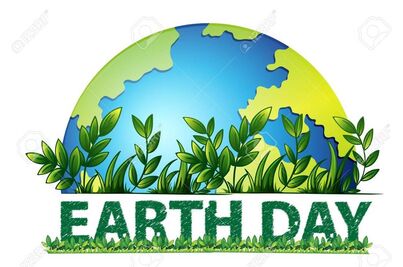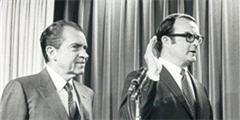The Missouri Recycling Association (MORA) announces its 4th annual virtual Earth Day Stewardship Showcase featuring projects, events and performing arts from across our great state. This is the 54th annual Earth Day celebration and is an invitation for all Missourians to celebrate Earth Day 2024 through acts of stewardship!
Originally established on April 22, 1970, the celebration has since grown in popularity, with many countries observing it around the time of the March Equinox (usually on March 21 or 22). In 2009, the United Nations General Assembly proclaimed April 22 as International Mother Earth Day, to be observed globally each year.
This year's Earth Day GLOBAL theme, Planet vs. Plastics, calls to advocate for widespread awareness on the health risk of plastics, rapidly phase out all single use plastics, urgently push for a strong UN Treaty on Plastic Pollution,
and demand an end to fast fashion.
Join us as we build a plastic-free planet for generations to come!
“The Planet vs. Plastics campaign is a call to arms, a demand that we act now to end the scourge of plastics and safeguard the health of every living being upon our planet.” KATHLEEN ROGERS President of Earth Day 2024
For more information go to https://www.earthday.org/
EARTHDAY.ORG’s Your Art, Our Earth poster competition for Earth Day 2024 is underway and open to student submissions until January 22, 2024!
Planet vs. Plastics unites students, parents, businesses, governments, churches, unions, individuals, and NGOs in an unwavering commitment to call for the end of plastics for the sake of human and planetary health, demanding a 60% reduction in the production of plastics by 2040 and an ultimate goal of building a plastic-free future for generations to come.
To achieve a 60% reduction by 2040, EARTHDAY.ORG’s goals are: (1) promoting widespread public awareness of the damage done by plastic to human, animal, and all biodiversity’s health and demanding more research be conducted on its health implications, including the release of any and all information regarding its effects to the public; (2) rapidly phasing out all single use plastics by 2030 and achieving this phase out commitment in the United Nations Treaty on Plastic Pollution in 2024; (3) demanding policies ending the scourge of fast fashion and the vast amount of plastic it produces and uses; and (4) investing in innovative technologies and materials to build a plastic-free world.
|
EARTH DAY 2024 Earth Day MO Events:
Springfield Area: Earth Day Festival A Plastic-free event April 27, 2024 Jordon Valley Park, Springfield MO https://www.earthdayspringfieldmo.org/ Kansas City Area: Earth Beat Festival Hickory Street April 22 (11AM-5PM) >Go Native: Earth Day Edition Anita B. Gorman Discovery Center April 22 (10AM-5PM) St. Louis Area: EARTH DAY 365 STL Earth Day Festival Muny Grounds in Forest Park April 20-21, 2024 (11AM – 5PM) Jefferson City: MDNR Earth Day Celebration State Capitol TBA Ozark Area: Prairie Barn Winery (Rolla) TBA Southwest Area: TBA *If you'd like to list an event happening in your area, please send the details to [email protected]! |

History of Earth Day:
Earth Day was first observed on April 22, 1970, when an estimated 20 million people nationwide attended the inaugural event. Just 8 months after the first Earth Day, the Environmental Protection Agency began dealing with all of the country's eco-initiatives - from banning DDT and setting emission standards, to regulating the application of lead-based paint and preventing water pollution. Today, our nation's air, land, and water are cleaner than they were in 1970. This is due in large part to laws like RCRA, which was passed to protect human health, land, groundwater, surface water, and air from the potential hazards of improper waste disposal. Following the passage of RCRA, EPA built the hazardous and municipal solid waste programs which fostered a strong societal commitment to recycling and pollution prevention. As these programs continue to grow and adapt, EPA is also focusing on the systemic approach to using and reusing materials more productively over the course of their life cycles. By looking at a product's entire life cycle, we can find new opportunities to reduce environmental impacts, conserve resources, and reduce costs. As these valuable efforts carry on, there is still more work we must do to address the largest and most immediate environmental and public health issues affecting the world right now. Right now, up to 2.5 billion people around the world lack access to safe drinking water and, as a result, proper sanitation. This issue contributes to millions of deaths each year. Billions of pounds of waste enter our oceans each year, harming marine life and coastal economies; and we estimate that more than $700 billion dollars are needed to modernize U.S. water infrastructure over the next 20 years. Although Earth Day only comes once a year, there's no reason to limit when we purposefully think about our environmental impacts and how we can lessen them. The whole month of April is Earth Month. Attend an event near you, form some new green habits, and learn what you can do to minimize your carbon footprint! History of Earth Day Take the Earth Day Quiz |
|
Some history ...
Each year, Earth Day—April 22—marks the anniversary of the birth of the modern environmental movement in 1970. The height of counterculture in the United States, 1970 brought the death of Jimi Hendrix, the last Beatles album, and Simon & Garfunkel’s “Bridge Over Troubled Water.” War raged in Vietnam and students nationwide overwhelmingly opposed it. At the time, Americans were slurping leaded gas through massive V8 sedans. Industry belched out smoke and sludge with little fear of legal consequences or bad press. Air pollution was commonly accepted as the smell of prosperity. “Environment” was a word that appeared more often in spelling bees than on the evening news. Although mainstream America largely remained oblivious to environmental concerns, the stage had been set for change by the publication of Rachel Carson’s New York Times bestseller Silent Spring in 1962. The book represented a watershed moment, selling more than 500,000 copies in 24 countries, and beginning to raise public awareness and concern for living organisms, the environment and links between pollution and public health. Earth Day 1970 gave voice to that emerging consciousness, channeling the energy of the anti-war protest movement and putting environmental concerns on the front page. The idea for a national day to focus on the environment came to Earth Day founder Gaylord Nelson, then a U.S. Senator from Wisconsin, after witnessing the ravages of the 1969 massive oil spill in Santa Barbara, California. Inspired by the student anti-war movement, he realized that if he could infuse that energy with an emerging public consciousness about air and water pollution, it would force environmental protection onto the national political agenda. Senator Nelson announced the idea for a “national teach-in on the environment” to the national media; persuaded Pete McCloskey, a conservation-minded Republican Congressman, to serve as his co-chair; and recruited Denis Hayes from Harvard as national coordinator. Hayes built a national staff of 85 to promote events across the land. April 22, falling between Spring Break and Final Exams, was selected as the date. On April 22,1970, 20 million Americans took to the streets, parks, and auditoriums to demonstrate for a healthy, sustainable environment in massive coast-to-coast rallies. Thousands of colleges and universities organized protests against the deterioration of the environment. Groups that had been fighting against oil spills, polluting factories and power plants, raw sewage, toxic dumps, pesticides, freeways, the loss of wilderness, and the extinction of wildlife suddenly realized they shared common values. Earth Day 1970 achieved a rare political alignment, enlisting support from Republicans and Democrats, rich and poor, city slickers and farmers, tycoons and labor leaders. By the end of that year, the first Earth Day had led to the creation of the United States Environmental Protection Agency and the passage of the Clean Air, Clean Water, and Endangered Species Acts. “It was a gamble,” Gaylord recalled, “but it worked.” As 1990 approached, a group of environmental leaders asked Denis Hayes to organize another big campaign. This time, Earth Day went global, mobilizing 200 million people in 141 countries and lifting environmental issues onto the world stage. Earth Day 1990 gave a huge boost to recycling efforts worldwide and helped pave the way for the 1992 United Nations Earth Summit in Rio de Janeiro. It also prompted President Bill Clinton to award Senator Nelson the Presidential Medal of Freedom (1995)—the highest honor given to civilians in the United States—for his role as Earth Day founder. Earth Day in the Modern World ... As the millennium approached, Hayes agreed to spearhead another campaign, this time focused on global warming and a push for clean energy. With 5,000 environmental groups in a record 184 countries reaching out to hundreds of millions of people, Earth Day 2000 combined the big-picture feistiness of the first Earth Day with the international grassroots activism of Earth Day 1990. Earth Day 2000 used the power of the Internet to organize activists, but also featured a drum chain that traveled from village to village in Gabon, Africa. Hundreds of thousands of people gathered on the National Mall in Washington, DC for a First Amendment Rally. Earth Day 2000 sent world leaders the loud and clear message that citizens around the world wanted quick and decisive action on global warming and clean energy. |
1970 - President Nixon swears in William Ruckelshaus, first EPA Administrator.
William D. Ruckelshaus served as the first Administrator of the newly created US Environmental Protection Agency (EPA) by then President Richard Nixon from Dec. 4, 1970 -- April 30, 1973. By 1970, many Americans had been convinced of the need for federal environmental protection, thanks to a fire on the polluted Cuyahoga River, a big oil spill along the Santa Barbara coastline, and Rachel Carson's 1962 book Silent Spring.
President Nixon tapped Ruckelshaus, an assistant attorney general and air-quality advocate from Indiana, to construct the first EPA by piecing together programs from the Interior Department and the Department of Health, Education and Welfare. Ruckelshaus recruited an idealistic and qualified staff and established the precedent for soliciting public and industry input on regulations. He oversaw the implementation of the landmark Clean Air Act extension of 1970 and the Federal Water Pollution Control Act Amendments of 1972. Ruckelshaus left the EPA to become acting director of the FBI and then second-in-command at the Justice Department, where he resigned in protest when Nixon ordered him to fire the Watergate special prosecutor (the infamous "Saturday Night Massacre" of Oct. 20, 1973). |

